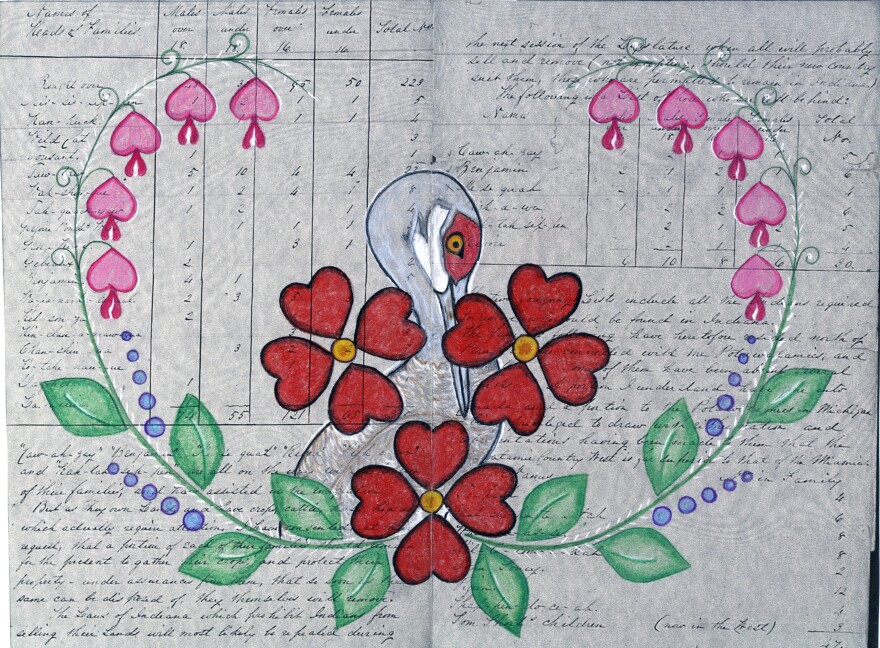On a fall day in 1846, hundreds of members of the Myaamia Nation passed through Butler County, Ohio, on the Miami and Erie Canal, roughly 13 miles east of Miami University. They were being forcibly removed from their homelands.
"It's likely that classes were in session when that happened," explains Kara Strass, director of Miami Tribe relations at Miami University. "As Myaamia people were being forcibly removed from their homelands, Miami University had already been founded and was educating students here in Ohio."
The university is marking the 175th anniversary of that day on Monday, Oct. 11, with a Day of Reflection. The gathering will begin near the Miami University Art Museum with remarks from Douglas Lankford, chief of the Miami Tribe of Oklahoma. Participants will then process through campus to the Myaamia Center where Executive Director Daryl Baldwin will talk about the tribe's revitalization and healing efforts. University President Gregory Crawford is expected to reaffirm the school's commitment to the tribe.
"I think that Miami University is coming to better understand how it is connected to the Miami people - the Myaamia people - specifically because we are located within the homelands of the Myaamia people," Strass explains. "It's because we share this name, we share this geography that our histories cannot be disconnected with each other.
"In the tribe we talk about quite often that we don't want to dwell on this terrible history, however, we do feel like we need to understand it in order to understand who we are today and how to move forward. And I think the university is learning to do that better today than they have in the past. It's because of this interconnected history that we share that Miami felt it was necessary to do an event like this."
The event is open to the public. It starts at a sculpture by a Myaamia artist Eugene Brown titled "A Tribe Named Miami, A Surveyors Stake, a Town Named Oxford," which represents the relationship between the university and the tribe. Participants will process through campus, passing trees tied with pieces of fabric to represent each of the 330 people who were removed. Full details can be found here.
A brief history of the Miami Tribe of Oklahoma
The Myaamia homelands encompass portions of the Great Lakes region - Indiana, Ohio, Illinois, lower Michigan and lower Wisconsin. Myaamia means "the downstream people" and their main villages were centered through the Wabash River valley, with hunting grounds across what is now Southwest Ohio and Southeast Indiana.
Through a series of treaties beginning with the Greenville Treaty of 1795, the Myaamia began slowly losing their homelands and were ultimately forcibly removed to Kansas in the 1840s.
"In 1846, half of the six hundred or so Myaamia - who had survived the years of war, disease and settlement perpetrated by the newcomers - were forcibly removed from our homelands and settled west of the Mississippi on lands in Indian Territory (current day Kansas)," the tribe writes, adding "in October of 1846 our ancestors, numbering approximately 500 souls, were herded at gunpoint and forced onto canal boats to begin the long journey down the Erie Canal system from eastern Indiana to the Ohio River."
From Kansas, the tribe members were forced to move once again to modern day Oklahoma where they remained. The Miami Tribe of Oklahoma is a federally recognized nation with more than 6,100 members as of October, 2021. It is headquartered in Miami, Oklahoma.
More in-depth information on the tribe's history can be found on its website here and here. The Myaamia Center also curates a blog for Myaamia people, which is currently posting about the forced removal and history of the tribe. It can be found here.
Miami is a financial supporter of Cincinnati Public Radio.



